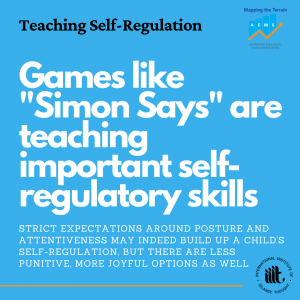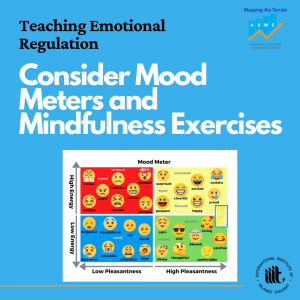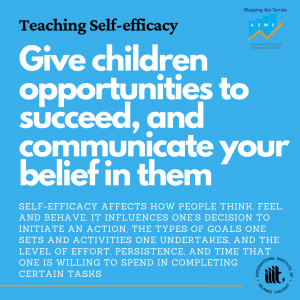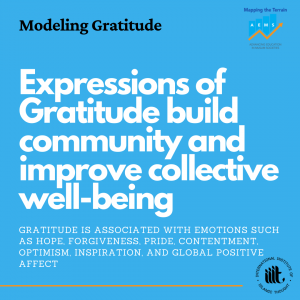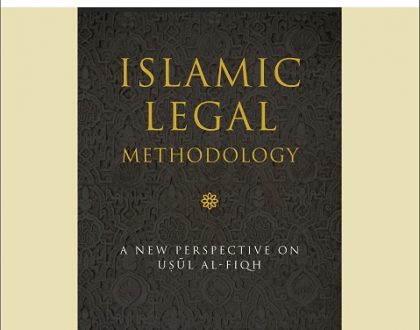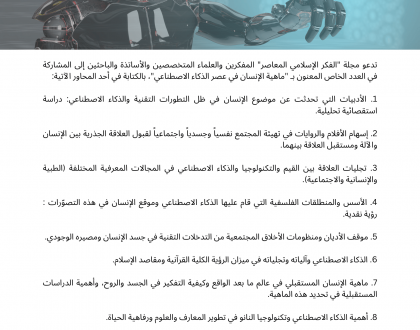AEMS BRIEF #5: CULTIVATING RESPONSIBILITY IN EDUCATION
Responsibility is the second of three areas we identified as necessary for social transformation and that we utilized in the Mapping the Terrain study of Muslim societies. The rationale for focusing on Open-Mindedness, alongside Responsibility and Collaborative Collective, is because they were identified in previous literature as catalysts for change (for more on this, see our third brief). This week, we are exploring the ways in which educators can cultivate personal and social responsibility in their students as well as some of the expected benefits to society that will come from a more responsibility focused curriculum and instruction supporting young people their development into adulthood. We see social responsibility as the guiding principle of social collaboration and cohesion.
The construct of Responsibility includes values and skills intentionally selected but not limited to self-regulation, emotional regulation, self-efficacy, and gratitude. This brief will go into greater detail on each of the skills that we have organized under the umbrella category of Responsibility, providing resources for educators with ways to integrate these skills into their curriculum and making the case for their significance in human development. The Mapping the Terrain research aims to provide baseline measures of these critical social and emotional skills and values in 16 Muslim-societies, and over the long-term we hope to be part of a movement that elevates these skills and values across educational systems to be of comparable significance to educators as more traditionally academic skills like grammar and arithmetic.
Teaching Self-Regulation
In this study self-regulation is defined as “generated thoughts, feelings, and actions that are planned and cyclically adapted to the attainment of personal goals” (Zimmerman, 2000, p. 14). Self-regulation has long been a focus of academic instruction and it has been shown to be a strong predictor of academic achievement in math, science, reading, and writing. The tie between self-regulation and academic achievement is so well established that it is arguably the driving force in many educational reform efforts targeting inequity – think of “No Excuses” schools that aim to close racial and socio-economic achievement gaps. The logic behind pedagogical constructs like SLANT (“Sit up, Listen, Ask and Answer Questions, Nod, Track the Speaker”) follows that if young people can self-regulate their bodies in this way then their minds will take in and retain knowledge regardless of the content. This is of course, an approach that is at best narrowly focused on academic achievement and at worst a type of oppressive body control that can feel better suited for a military academy than an elementary school. Nevertheless, the popularity of these strategies and their demonstrated success at achieving their desired outcomes is proof that self-regulation is something that can be taught; the question is how broadly we choose to conceive of self-regulation.
Mapping the Terrain is explicitly driven by a belief in holistic education and its power to transform society for the better. We are not simply interested in cultivating the self-control necessary for a young person to stay in their seat for the duration of a class period or to consistently complete their homework, but also to build their capacity to self-monitor and evaluate their own behavior and modify or continue using appropriate strategies to achieve their goals. For educators, this requires a delicate balance of scaffolded support that gradually presents young people with the autonomy to self-regulate in various settings and situations. In order to do this well, educators need to be well-versed in developmental psychology to know what is developmentally appropriate for the young people they are working with. They also need to think creatively about opportunities to teach self-regulation. Take, for example, this list of 10 games that require no equipment and that promote self-regulation. Expecting children to SLANT – and having consequences associated with failure to do so – may indeed build up a young person’s self-regulation but it does so in a punitive way largely devoid of joy. Many of the same skills can be built by playing “Simon Says” instead.
Teaching Emotional Regulation
Self-regulation is very closely tied to emotional regulation. A holistic approach to human psychology suggests that a person’s emotional state and their behavior are intimately linked. That being said, the skills involved in ones’ emotional regulation are distinct and teaching them should be a priority for educators interested in their pupils’ long-term well-being. Emotional regulation has been referred to as “a process through which individuals modulate their emotions consciously and non-consciously to respond appropriately to environmental demands” (Goubet & Chrysikou, 2019, p. 1). The last part, about responding appropriately to environmental demands is worth lingering on. First, it centers the reality that emotional expectations vary significantly depending on one’s identity and the way that identity interacts with the external environment. The range of emotional expression considered acceptable for young girls and young boys in different contexts, for example, can be highly variable and may necessitate different coping strategies for two people who may be experiencing similar emotional triggers. This is important to keep in mind, especially when you consider the role educators play in constructing the learning environment. If we can build classrooms that provide safe opportunities for young people to emotionally regulate, and to explore different strategies for doing so, then we can build their toolbox of emotional responses and help them mature into adults with a healthy relationship to those emotions. Mood meters have been integrated into the curriculum of major school districts in the United States for example, and their complexity can be scaled up as young people build their vocabulary for recognizing and naming specific emotional states. Mindfulness exercises, such as purposeful deep breathing at the start of an activity help young people focus and prepare to learn and also give them a tool for regulating their emotions in non-academic settings. Like the other skills discussed in this and other briefs, promoting the emotional regulation of young people should be an explicit goal for educators and one that is shared with students in the same way you might share academic goals. The best part is that most of these activities take up very little time can be integrated into almost any existing classroom routine.
Teaching Self-efficacy
Self- and emotional regulation on their own are enough for someone to adapt to and survive in most environments, but in order to thrive young people need to believe in their own ability to achieve goals and influence their environment. Self-efficacy affects how people think, feel, and behave. It influences one’s decision to initiate an action, the types of goals one sets and activities one undertakes, and the level of effort, persistence, and time that one is willing to spend in completing certain tasks (Bandura, 2006, 2017). Many studies support Bandura’s claim that a person’s beliefs in his or her ability to be successful in a task plays a more significant role in success than the capability itself. Self-efficacy is malleable and is influenced by four main sources: past performance accomplishment or mastery, vicarious experience, social persuasion, and physiological/ psychological states (Bandura, 1986).
If we can give young people frequent opportunities to succeed while situated in classrooms that affirm their identities, which are staffed by educators that routinely and genuinely communicate their belief in them, then we can take care of the first three sources of self-efficacy for students. Bandura’s final source, physiological/ psychological states, is highly individualized and prone to influences outside of a classroom teacher’s control. However, effective instruction and engagement with the previously mentioned self- and emotional regulatory strategies can equip young people with some of the tools they need to build lasting self-efficacy.
Modeling Gratitude
Gratitude is a positive emotion and an important human virtue that is especially called for in all major religions and cultures. The literature suggests that “adolescents’ gratitude is positively related to many of the same emotions found in the adult research, such as hope, forgiveness, pride, contentment, optimism, inspiration, and global positive affect” (Wood et al., 2010, p.895). Expressing gratitude can be incorporated into the daily routine of a classroom. Consider setting up an anonymous gratitude jar for students to thank their peers, then read out submissions at the end of the day or week. If you and/or your students are already journaling regularly, take the time to reflect and give thanks. Teachers can model gratitude for young people, thanking students for their contributions to the discussion or community. Regularly expressing gratitude will help young people develop their own capacity to be grateful, and also improve the general well-being of teachers as well. Teachers of ethics, civic education and religious studies can instill and infuse gratitude in their curriculum. Gratitude doesn’t mean giving up ambitions but having a level of life satisfaction and hope.
***
Personal responsibility is already an expectation of most educational systems, but much more can be done to cultivate long lasting social responsibility in young people. Making a deliberate effort to teach responsibility in a scaffolded developmentally responsive way is key if we want to unlock the full potential of every child. Building young people’s skills for self-regulation, extending that regulation to the realm of emotions, fostering self-confidence and self-efficacy, and then promoting a sense of gratitude for all that we have, no matter how big or small, are steps to raise a socially responsible generation. The practical ideas provided above could be adapted to your specific community and context, and the Mapping the Terrain report offers preliminary measures of these skills from across the globe and suggests their importance and value for the participating communities in the study.
As this work continues, we hope that you will engage with us in thinking through the implications of this research. You can do that by responding to this email with any thoughts, by following us on Instagram (@iiit_insta) and Twitter (@iiitfriends), and by forwarding this message to anyone in your life who might find it interesting.
Thank you and all the best,
Alex Koenig,
Non-Resident Fellow in Human Development and Education Policy
The Advancing Education in Muslim Societies (AEMS) Team
The International Institute of Islamic Thought.

